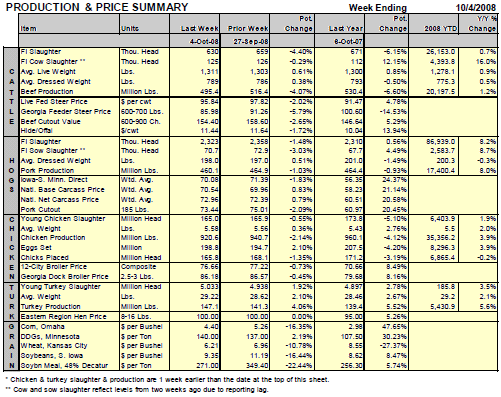



CME: Livestock Futures Reflect Uncertainty
US - CME's Daily Livestock Report for 3rd October 2008.While livestock futures continue to reflect the overall uncertainty in the broader equity and commodity markets, the mood has turned decidedly bearish, at least in the short term. Both cattle and hog futures declined sharply in the week ending October 3 and Monday trading could again reflect the negative attitudes regarding the outlook for the global economy.
European and Asian stocks were sharply lower late Sunday and early Monday morning and this could weigh on cattle and hog futures when markets open on Monday. With the financial rescue package signed into law, the market has now turned its attention to reports that global economic growth may be grinding to a halt. Already there are plenty of indications that US and EU countries could slide deeper into recession in the next couple of quarters, especially now that consumers have begun to pull back on their spending. As spending declines, businesses have to lay off workers, which in turn leads to even larger reductions in purchasing power and thus producing a self sustaining downward cycle.
Meat consumption generally tends to suffer during a recession, although the last two recessions in the US have been relatively short. Some studies have shown that consumers tend to spend less during a downward cycle while they spend more time shopping, searching out lower priced goods. A big fear going forward is that a global economic recession could cause sharp reversals in the export gains made over the past decade. Indeed, this is a new chapter for the US industry as never before have US beef, pork and poultry producers been so dependent on global markets. A growing middle class in developing countries as well as a weaker US dollar led to a boom in US pork, poultry, and to a lesser extent beef exports during this decade.
But, the US currency has strengthened recently, in part due to the repatriation of US dollars as well as because of a shifting interest rate landscape in other markets. While one can argue about the long term outlook for the US dollar, especially given the increasing liabilities of the US government, in the short term, the strength of the US dollar is a significant negative factor for the livestock industry. As for producers, lower domestic and export sales could lead to further reductions in output and more consolidation along the supply chain.









